Content
There are many varieties of garlic that are planted in spring or late fall. Dobrynya garlic is a winter species intended for planting before winter. Among its analogues, the variety stands out for its many positive characteristics, which attracts gardeners. First of all, it is valued for its frost resistance, strong immunity and ease of care.
History of variety selection
Garlic of the Dobrynya variety is the result of Russian selection, obtained relatively recently. It received a similar name in honor of the character of Russian folk tales - the second hero after Ilya Muromets.
Included in the group of winter varieties, bolting type. Included in the State Register of the Russian Federation in 2002 as a self-sufficient variety of garlic crop. Recommended for cultivation in any region of the Russian Federation, on private plots and small horticultural farms.
Description of the garlic variety Dobrynya
Dobrynya garlic is a variety with a late ripening period.Harvesting begins 125-130 days after the first shoots appear in the spring. Popular among gardeners, especially in central Russia, due to its resistance to low temperatures.
Detailed description of winter garlic of the Dobrynya variety:
- Forms fleshy, dense foliage of a greenish-white color, up to 60 cm high. The width of the leaf plate is 2 cm.
- The root crop (heads) is round in shape, light gray in color, with lilac veins. Includes up to 12 lobes, with a total weight of about 60 grams.
- The pulp is dense and aromatic, sweetish, with a mild pungency in taste. Has a cream color.
- The surface shell of the teeth is scaly with a lilac tint.
The dry matter content in the garlic head is about 40% and sugar – 24%. Up to 10 mg of ascorbic acid is noted in 100 grams of product.
Characteristics of the Dobrynya garlic variety
The characteristics of winter garlic Dobrynya include a number of its advantages, thanks to which it occupies a leading position among other varieties. These, first of all, include: consistently high and abundant yields, frost resistance, high resistance to diseases and pests.
The Dobrynya variety is universal in use: it is actively used not only in cooking, but for medicinal and preventive purposes (an effective anti-cold remedy). Suitable for fresh consumption, as well as as a preservative and flavoring additive in winter preparations. It is added to meat, fish dishes and soups, which transforms their taste beyond recognition and adds a touch of piquancy.
Productivity
Dobrynya garlic is a late-ripening bolting variety. From the day of planting to full ripening, about 130 days pass. The heads are large, consisting of at least 10 parts, each weighing 5 g.In general, the root crop gains weight, about 55-60 g.
The variety is famous for its high yields - 2-2.5 kg per square meter of planted area.
Early planting in warm weather stimulates active growth. Green shoots that appear prematurely freeze out. Consequently, part of the crop will be ruined, and the rest will produce small heads. If planted late, the seeds will not have time to germinate and form strong root shoots. If garlic plants successfully overwinter, then in the spring they begin to grow less intensively.
Resistance to diseases and pests
The winter garlic variety Dobrynya has stable immunity, especially against late blight. Pests avoid it because they cannot tolerate the strong aroma.
Advantages and disadvantages of the variety
Like all vegetable and fruit crops, Dobrynya garlic is assessed from two sides: advantages and disadvantages. The first category includes:
- consistently high productivity;
- cold resistance;
- counteracting fusarium;
- decent consumer and taste qualities;
- possibility of long-term storage, while maintaining the original indicators (about six months).
Obvious shortcomings include drying out and rotting of the bulbs when stored for more than 6 months.
Planting and caring for garlic
Despite the unpretentiousness of Dobrynya garlic in care and resistance to various negative external factors, compliance with a number of agrotechnical measures during planting and the correct timing affect the yield.
The winter variety Dobrynya, due to climatic conditions, is suitable for cultivation in Russia and neighboring countries: Ukraine, Moldova, Belarus.
Garlic planting dates
The optimal period for planting winter garlic of the Dobrynya variety is mid-autumn, approximately 1-1.5 months before the onset of the first frost. The dates vary depending on local climatic conditions: in the south - until the beginning of November, in the middle zone and to the north - all of September. Then the garlic cloves will successfully take root before December and will safely overwinter, since they will not have time to germinate.
In order to successfully navigate planting dates, it is recommended to control the degree of soil cooling by measuring with a thermometer. The optimal indicator is +12-13 °C.
Preparing the bed
The Dobrynya variety is not particularly capricious, but does not tolerate depleted and dry soil. Select a site that is sufficiently illuminated, since the crop requires ultraviolet absorption for at least 2-3 hours a day to set fruit. The ideal predecessors of Dobrynya garlic are: strawberries, tomatoes, potatoes.
The future location of the garlic is dug up, adding potassium-containing additives and superphosphate, 25-30 g of each per 1 square meter. m. If necessary, flavor the soil with organic matter: leaf compost, rotted manure. The clay composition is diluted with river sand or peat.
Form beds and let them stand for two weeks. This is due to the fact that in an excessively loose substrate, the garlic of this variety grows small and is not stored for a long time.
Planting garlic
The cloves for planting Dobrynya garlic are carefully selected, excluding: damaged, moldy, rotten, chipped. The bottom should be smooth, without any integrity violations.
The winter variety Dobrynya is planted according to a certain scheme:
- in rows located at a distance of 25 cm from each other;
- the interval between garlic is 13-15 cm;
- to a depth of 3 to 5 cm.
Failure to comply with these rules leads to freezing of Dobrynya garlic in winter.
The teeth are stuck in with the bottom down, without particularly compacting. Sprinkle the soil mixture on top. After completion of work, no watering is required. For regions with frosty winters, one nuance is implied - mulching beds with garlic with straw, sawdust or other plant waste. With the first warmth of spring, such protection is removed to open access to light, air and moisture.
Growing Garlic
Further cultivation of Dobrynya garlic is not much different from similar varieties. Main agrotechnical measures:
- systematic loosening of the substrate;
- elimination of weeds;
- moderate watering from a watering can;
- appropriate and timely feeding.
The first time the plantings are fed is in early spring, after loosening. Ammonium nitrate is used for this, at a rate of 13 g per square meter. m. In case of depleted soil, it is recommended to additionally apply organic fertilizers or complex mineral compounds.
The procedure is scheduled to be repeated in 10-12 days, then it is necessary to add nitroammophoska in the amount of 35 g per ten-liter bucket of water. In mid-July, when garlic is actively growing in volume, the soil mixture is flavored with dissolved superphosphate.
Garlic beds are watered regularly and abundantly, but without creating swampiness. Two weeks before the planned harvesting of the crop, watering is completely stopped. To speed up the ripening of the bulbs, the upper part is exposed by raking the soil 2-3 days before harvesting. If you cut off the arrows released by garlic in June, the amount of garlic will eventually increase significantly.
Harvest and storage
The readiness of garlic for digging is determined by its appearance: the foliage turns yellow, dries out, falls to one side, and the scales become denser. You should not delay harvesting work, since overripe garlic tends to break down into separate components.
It is advisable to harvest the crop in dry weather, then it is more convenient to lay out the vegetables to dry in the open air. In the rain, garlic is placed under a canopy. When the tops are completely dry, they are cut off, leaving a few centimeters at the base of the bulbs. Be sure to shorten the roots.
For long-term storage of the Dobrynya variety, you will need a room with working ventilation and good drying. The optimal temperature range is from 0 to +4 °C. Garlic is packaged in nets or small boxes.
Methods for propagating garlic
Gradually, the Dobrynya variety loses its original characteristics and requires updating. It is recommended to rejuvenate garlic plantings every 3-4 years.To do this, use airy bulbs that form on winter garlic in early spring, when it sprouts arrows.
Seeds from them are sown immediately and at the end of the growing season they produce single-toothed plants. The next year they form into full-fledged bulbs.
Diseases and pests, methods of control and prevention
Garlic of the Dobrynya variety is rarely attacked by pests and practically does not get sick if you follow basic agricultural cultivation techniques. But during the process of active growth in summer, cases of damage cannot be excluded: fusarium, root rot. Particularly dangerous parasites are: root mites, nematodes, onion flies and hoverflies.
The cause of fusarium wilt is excessive moisture, against the backdrop of consistently warm weather. You can tell that garlic is withering by its yellowing and wilting leaves. The affected heads become loose, slimy and are easily removed from the soil.
Rot occurs during storage of garlic. The teeth soften, become covered with small ulcers and partially rot.
Since garlic is eaten, treatment with fungicides and insecticides is unacceptable. The only way to combat diseases and pests is to plant healthy material, proper care, and adherence to the principles of crop rotation. Diseased plants are dug up and disposed of. After this, the plot cannot be planted with garlic for the next 4 years.
Conclusion
Dobrynya garlic is considered the best among winter varieties, due to its wide range of advantages. First of all, the variety is valued for its ease of cultivation and resistance to diseases, so it is suitable for beginning gardeners to gain experience.
Reviews
Garlic of the Dobrynya variety is popular, as evidenced by numerous positive reviews.However, not everyone is delighted with it, so it’s worth familiarizing yourself with the variety from both sides.
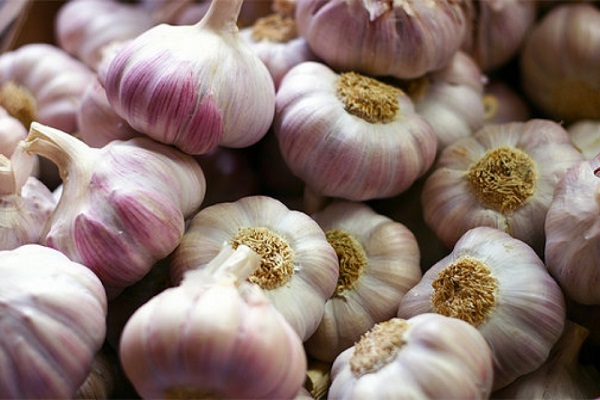
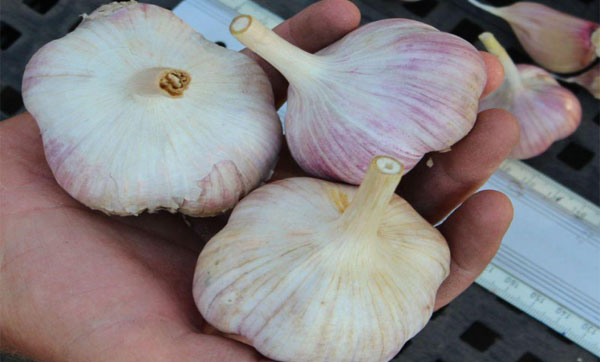
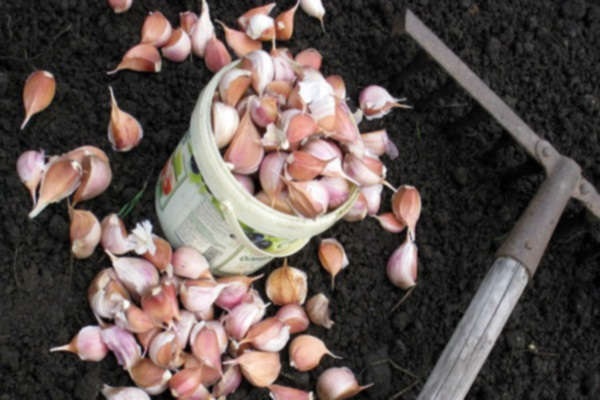
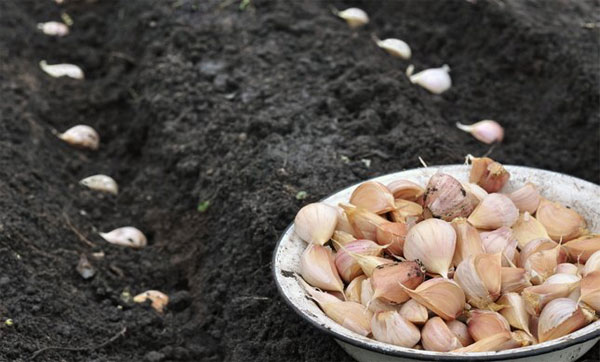
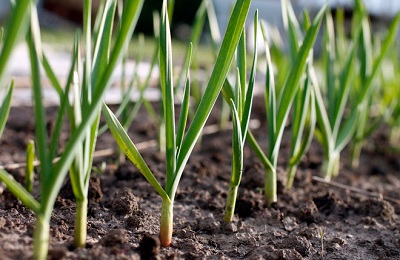
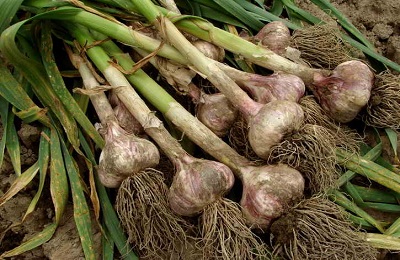
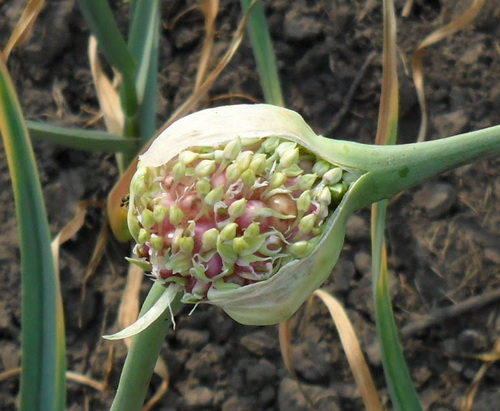
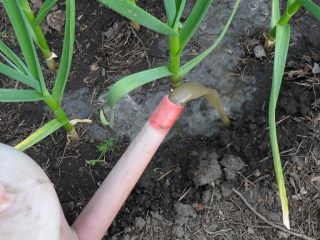
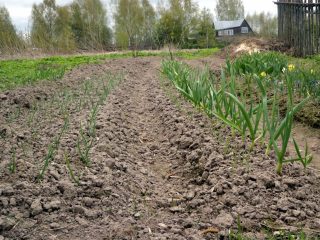
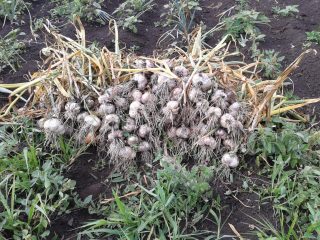
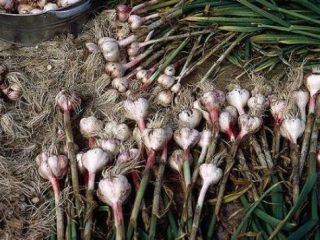
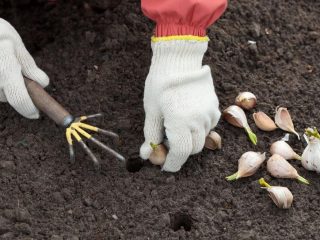
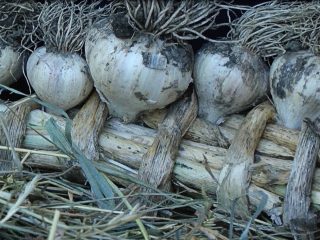
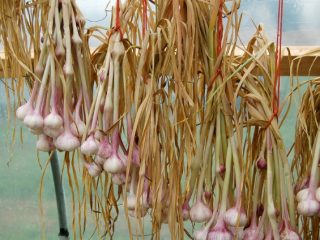
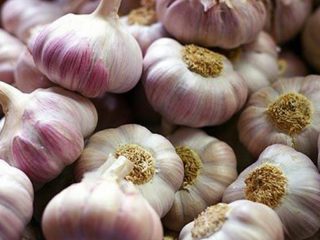
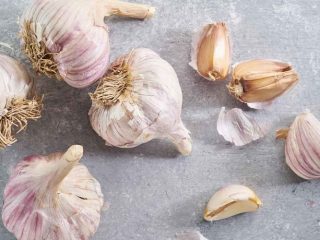
For 2 years now we have been planting dobrynya, a very fragrant, spicy garlic, since we are from the Caucasus, garlic is in great demand, we received a very good harvest, we are satisfied